[ad_1]

Lois Mailou Jones was born in Boston, Massachusetts on November 3rd 1905. Her mother Carolyn ran a beauty parlour and made and designed hats. Her father, Thomas Vreeland Jones was a superintendent of a large office building, who attended night school to become a lawyer. At the age of forty he graduated from Suffolk Law School, the first African-American to earn such a degree from that school. He went on to become a lawyer. Whilst still a child her parents moved to a house on Martha’s Vineyard and it was here that Lois first came into contact with people who were to influence her future life.
As a child, Lois enjoyed drawing and painting and her parents encouraged her. She was given her first set of watercolours at the age of seven. She enjoyed her time at school and recalled:
“…The schools were not segregated and I had the good fortune to have my teachers interested in my talent and I received much encouragement,” she said. “My happiness was to go to Martha’s Vineyard as soon as school was out. It was a great joy to live with nature. Environment is so important to any artist…”
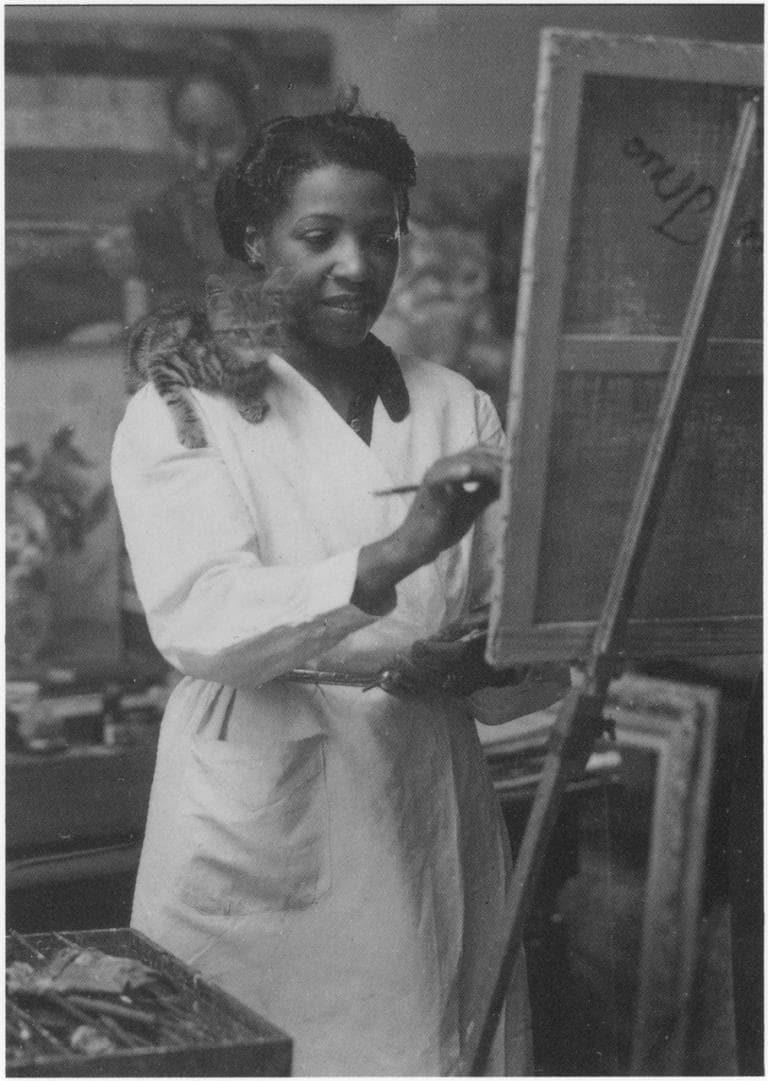
She attended the local primary school and in 1919 she was enrolled at the High School of Practical Arts in Boston. During her four years of studies there, she also attended evening classes at the Boston Museum of Fine Arts thanks to an annual scholarship she was awarded. She developed an interest in fashion and costume design and became an apprentice with Grace Ripley, an academic and costume designer. Lois Jones worked with Ripley after school and on Saturdays, where she would become familiar with exotic costumes and African masks which would later feature in her artwork. Her interest in African masks also led her to creating costume designs for the Denishawn School of Dancing and Related Arts, the first dance academy in the United States to produce a professional dance company.
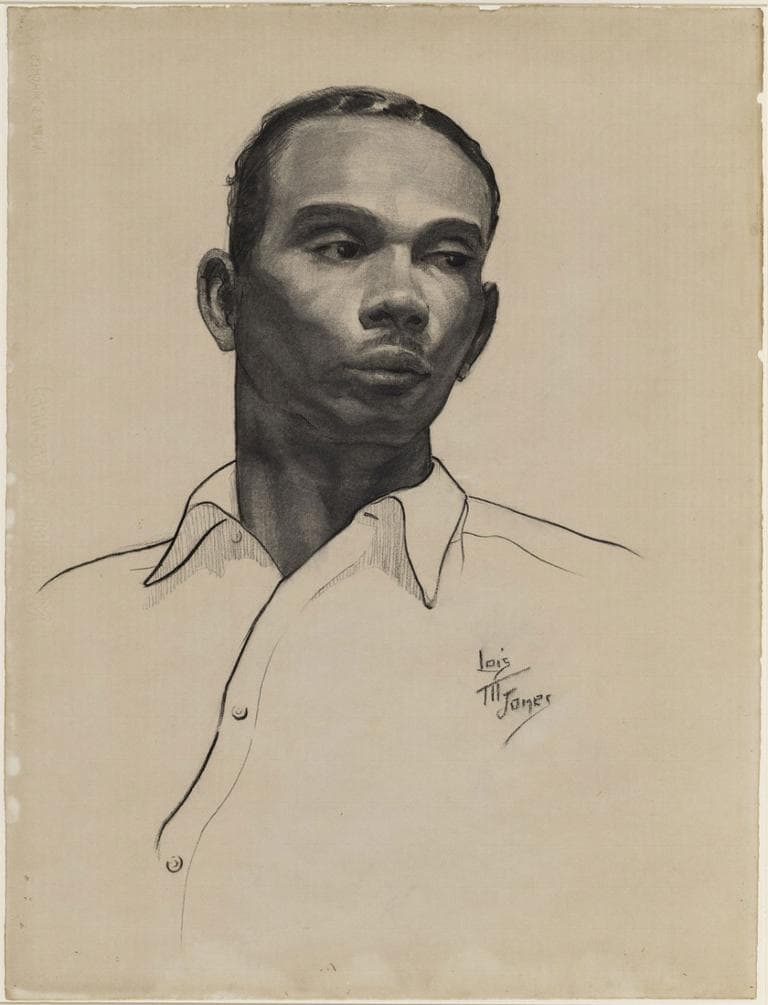
Lois was only seventeen years old when she held her first solo exhibition in Martha’s Vineyard. Jones began experimenting with African mask influences during her time at the Ripley Studio. In 1923, at the age of eighteen, Lois attended the School of the Museum of Fine Arts in Boston where she studied, not art, but design. She was an outstanding student and she won the Susan Minot Lane Scholarship in Design. Whilst studying for her degree she also took evening classes at the Boston Normal Art School, a public college of visual and applied art in Boston.
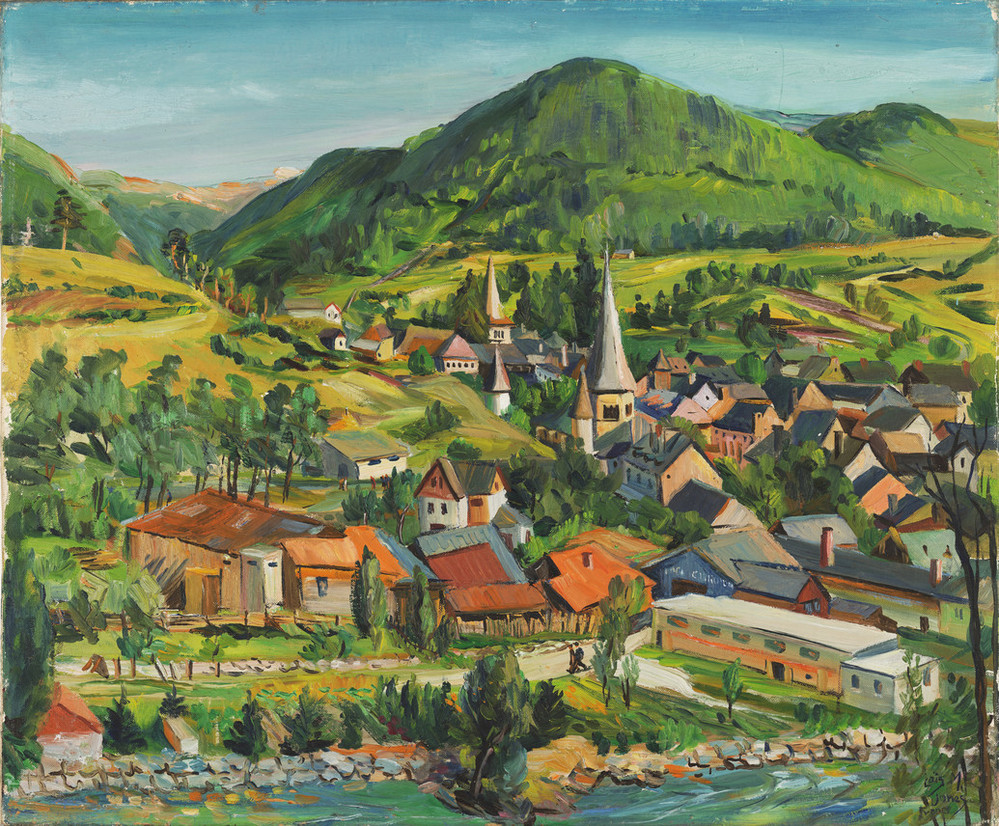
Lois Jones began to search for something which would bring her recognition as an artist. Whilst searching she discovered the Harmon Foundation of New York, which had been established in 1921 by wealthy real-estate developer and philanthropist William E. Harmon. It was the first major foundation supporting African American creativity and ingenuity and held national competitions for black artists. Lois exhibited several of her works at these exhibitions and received several awards. It was through this foundation that she became interested in black America’s 20th century movement known as the Harlem Renaissance. During the summers of the 1920’s and 1930’s, Lois Jones spent much of her time in Harlem and this had the most reflective influence on her early development as an artist. During these visits, Jones was engrossed in the art and theories of the Harlem Renaissance. The Harlem Renaissance was an intellectual and cultural revival of African American music, dance, art, fashion, literature, theatre, politics. At the time, it was known as the “New Negro Movement”.
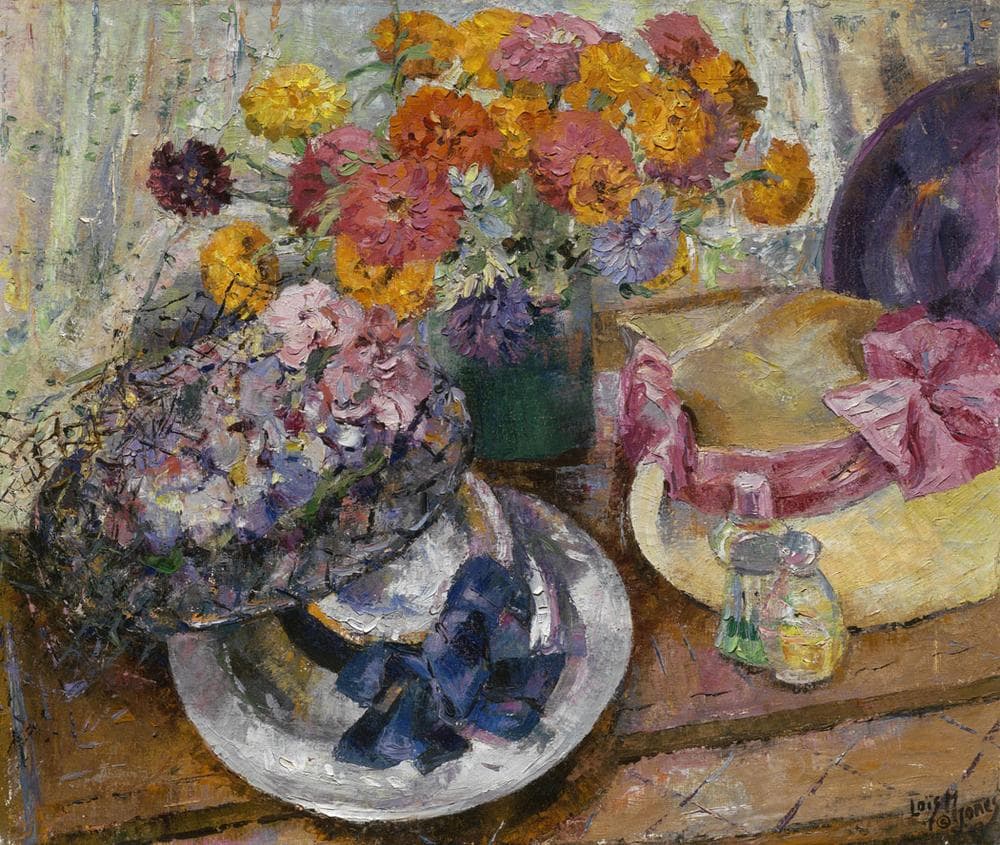
Throughout the early part of her life she continued to take the opportunity to study. In 1934, she attended classes at Columbia University where she studied different cultural masks and in 1945, she received a BA in art education from Howard University, a private, research university, graduating magna cum laude. Not long after Lois left college, she decided to take up the role as an educator. She applied for a teaching post at the Boston Museum School but the director rebuffed her application saying that she should apply for a job in the South where “her people” lived. This racially prejudiced opinion from a person of such stature must have shocked her. Not to be put off by such bigotry she continued to look for work and finally was accepted for a teaching post at Palmer Memorial Institute, a historically black prep school, in Sedalia, North Carolina. The Institute was founded by nineteen-year-old Charlotte Hawkins Brown, an African American educator in 1902 with the aim of teaching elementary and high school students in rural North Carolina. It was named after Brown’s benefactor and friend, Alice Freedman Palmer, and originally the Institute began in an old blacksmith shed. Whilst working as a prep schoolteacher, she taught the children folk dancing, piano playing and even coached a basketball team.
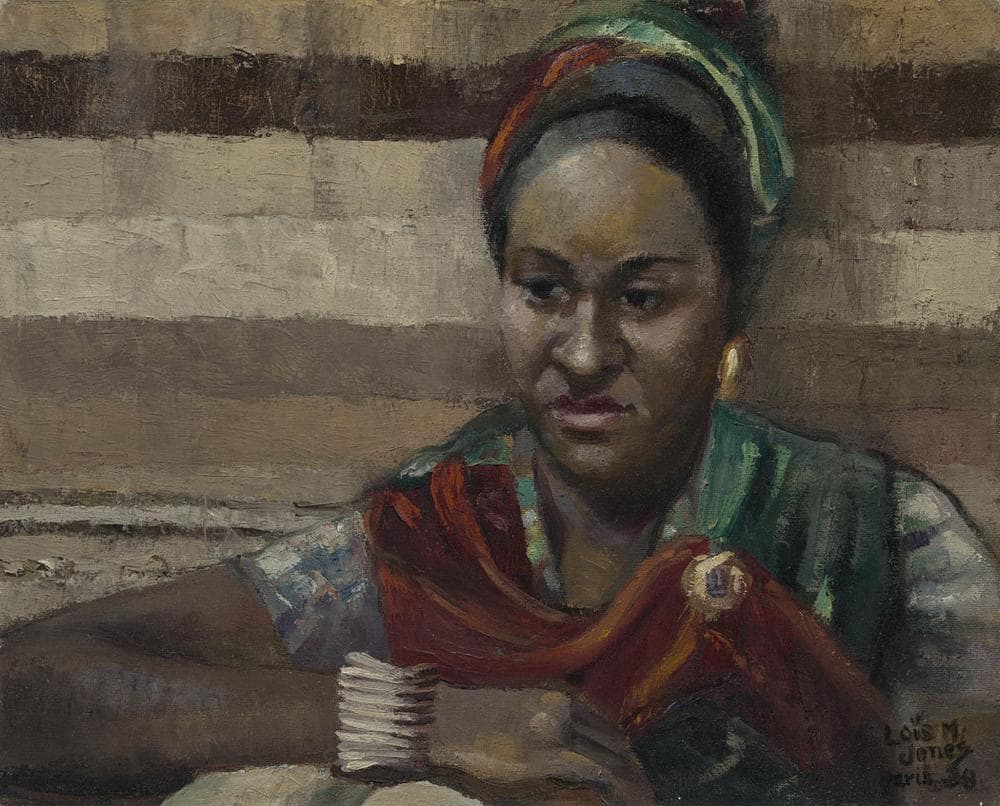
In 1930, Lois was offered and accepted a position at Howard University in Washington, D.C. by James Herring, who had founded the Art Department at Howard University and served as mentor to many artists and art historians. Lois Jones remained there, as professor of design and watercolour painting, until her retirement in 1977. Lois’ main ambition whilst at Howard University was to ensure her students were made ready for a competitive career in the arts and to aid this ambition she would arrange for established artists and designers to visit her classes and give talks, demonstrations and workshops. In doing this she became an ardent advocate for African-American art and artists.

In 1932 Lois Mailou Jones created a painting entitled The Ascent of Ethiopia. The painting is the pictorial story of the grim and challenging journey of African Americans who, through years of sacrifice and intolerable difficulties, have managed to create a legacy built on their trials and tribulations. It has been a constant fight for African Americans from the time they lived in Africa, the sea voyage to America and once there, how they have had to fight to attain their artistic and intellectual pinnacle. Lois Jones painting depicts this story by her use of certain elements of design and colour, and space. The works she created throughout her life tell the story of many different cultures. In this painting she chooses to represent her own culture. This work of art was Jones’ way of expressing intense and reflective respect for her race. When we study the painting the first thing our eyes focus on is the figure wearing a blue and black headdress in the right foreground. It takes up a quarter of the canvas. The figure looks to the left as it observes the other figures, who are carrying pots on their heads, and pointing skywards at a bright star. They are all ascending towards a city, comprised of two large buildings, at the top right of the painting.
In front of the buildings are two entertainers, one of whom is playing the piano whilst the other I think is preparing to sing as we see musical notes all around him. Behind these two big buildings there’s a big round yellow circular object protruding from the side, surrounded by two blue/turquoise concentric circles. It has a face, and someone on a bended knee appearing to be acting on top of it. The turquoise-coloured circle is bigger than the previous one and has a face coming out towards the inside. Further up there’s someone painting on top of the blue circle with the words art above enclosed within the blue circle. A symbolic palette and brush are painted within that same blue circle, the star in the top left corner has rays of squiggly blue, green, and black streaks that radiate diagonally. The star is inside of a yellow circle shining down on the people gesturing towards it, this picture reflects what Jones was trying to convey to her audience. The painting is a tale of transition, a long and tortuous voyage from the poverty of Ethiopia to America where African Americans, through hard work and dogged determination, became talented actors, artists and entertainers. It is also about cultural identity.
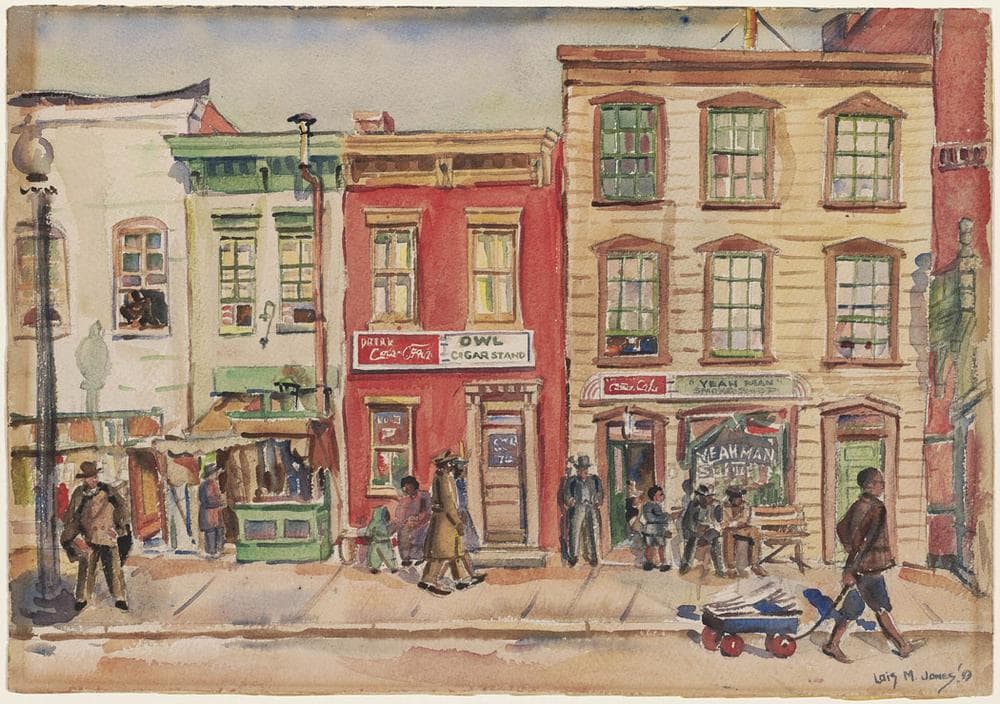
In 1937, Jones was awarded a fellowship to travel and study in Paris at the Académie Julian. That year, whilst in France, she produced more than forty works of art, including thirty watercolours, may of which were plein air renditions. Two of her paintings were accepted at the annual Salon de Printemps exhibition at the Société des Artists Français for her Parisian debut. What also pleased Lois during her twelve months stay was that unlike in America, she was fully accepted in society and that the colour of her skin mattered little. She managed to obtain an extension to her fellowship which allowed her to travel to Italy.

In 1938, she completed one of her best-known pieces, entitled Les Fétiches. It was and African inspired painting that now hangs in the Smithsonian American Art Museum. Painted in a Modernist style it features five overlapping masks from different African tribes and conveys a mysterious spiritual dimension summoned by ritual dance. To the right of the main mask, we see what is known as a red religious’ fetish. The term “fetish” (fétiche in French) refers to an object believed to have supernatural powers, or in particular, a human-made object that has power over others. The masks and fetish appear to float in the mass of a black painted canvas. When in France, Lois would probably have seen many different African objects and masks at the Musée de l’Homme, an anthropology museum in Paris. In Les Fétiches, the Songye people’s masks and African Dan masks are visible.

In 1941, Lois Jones entered her painting Indian Shops Gay Head, Massachusetts, into the Corcoran Gallery’s annual competition which she had completed the previous year. For her the main problem with exhibiting her work at this prestigious exhibition was that the Corcoran Gallery prohibited African-American artists from entering their artworks themselves and only work from “white” artists was deemed acceptable. Jones asked Céline Marie Tabary, her friend and arts professor at Howard University who championed African-American art in 1940s Washington, D.C. to enter her painting so as to side-step the racist rule. This painting by Lois won the Robert Woods Bliss Award but she could not collect the award herself and she had to arrange for Tabary to mail the award to her. In 1994, the Corcoran Gallery of Art gave a public apology to Jones at the opening of the exhibition The World of Lois Mailou Jones, 50 years after Jones hid her identity.

In 1944 Lois Jones painted one of her most controversial and thought-provoking works. A philosophy professor at Howard University and founder of the Harlem Renaissance, Alain Locke, encouraged her to depict her heritage in her paintings and this led to her painting, Mob Victim (Meditation). She remembered how the painting came into being, saying that she had been walking along U Street Northwest in Washington, DC. when she saw a man walking along and she stopped him and asked if he would pose in her studio for her painting which would depict a lynching scene. The man told Lois that he had actually witnessed a lynching and mimicked the pose that the man held before being lynched and visually illustrated a contemplation of imminent death which was well understood by blacks during the 1940s. The image we see of the man whips up deep and powerful feelings as we observe the innocence of the black man who is calling into question the intolerable actions of society. Look at the questioning expression in the man’s eyes. It is a very emotional work which poses the simple question, why?

In 1953, at the age of forty seven, Lois finally married Haitian graphic artist Louis Vergniaud Pierre-Noel.. They had been close friends for twenty years and he had influenced Lois by introducing her to the bright colours and bold patterns of Haitian art and she would immerse herself in the Haitian culture during their annual trips to her husband’s homeland. Jones’s style shifted again after she married She once said that the art of Africa is lived in the daily life of the people of Haiti.

In 1970 she visited Africa for the first time. She journeyed to eleven different countries on the African continent. The trip had been made possible with a grant from Howard University to keep a record of the various artists she met. She returned to the African continent in 1972, 1976 and 1977. In the painting a young woman looks out at us from under her partially closed eyelids. The girl’s face is surrounded by two types of masks: in profile, is a large Dan mask from Liberia or Côte d’Ivoire, and drawn within orange outlines are two Pende masks from the Democratic Republic of the Congo. Masks were thought to be powerful ways of communicating with spirits; the Dan mask represents a specifically female spirit, and the blue and red twisting lines in the lower left corner are a pattern of the Edo, from Benin Kingdom, called “rope of the world” representing a person’s lifetime., The woman’s forehead and cheeks are painted white for her initiation celebration into womanhood and vivid diagonal red lines overlap at the bridge of her nose, which leaves her mouth and chin uncovered. Loïs Mailou Jones was captivated by this woman and created the portrait in 1972, entitled Ubi Girl from Tai region. The Tai region was part of Côte d’Ivoire, which Lois visited during her extended trip to Africa. The artist had a long-held dream of traveling to Africa since her twenties, and at the age of 65, she fulfilled her career-long ambition.
Jones continued to produce beautiful works of art. On her 84th birthday in November 1989, Jones had a major heart attack which necessitated a triple bypass operation. On June 9th 1998, Jones died at the age of 92 at her home in Washington, DC and is buried on Martha’s Vineyard in the Oak Bluffs Cemetery.
[ad_2]
Source link









